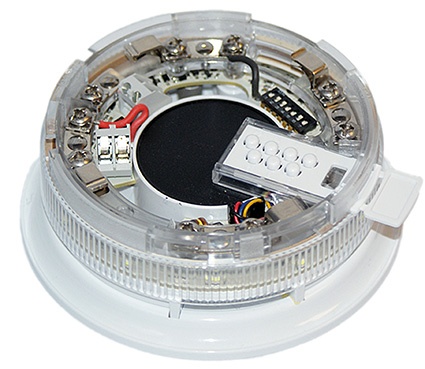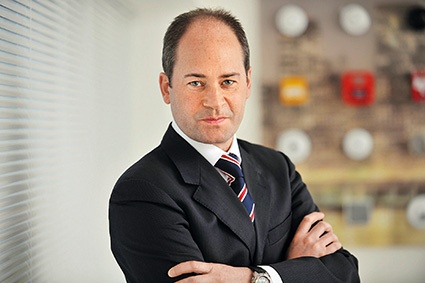Fire Detection: Silent Alarm Standard
The introduction of a new standard [EN54-23: Fire alarm devices - Visual alarm devices] has been postponed until 31 December 2013, but manufacturers need to act now to ensure thei...


The introduction of a new standard [EN54-23: Fire alarm devices - Visual alarm devices] has been postponed until 31 December 2013, but manufacturers need to act now to ensure their products meet the standard's requirements. Paul Pope of Apollo Fire Detectors considers the implications of this new European product standard and the reasons behind its introduction.
The aim of EN54-23 is to ensure that any individual with a hearing impairment is notified in the event of a fire. This includes individuals that are classed as deaf or hard of hearing, and also individuals whose hearing may be temporarily affected by external factors such as areas of high ambient background noise, the use of ear defenders, or even the intentional limiting of an audible alarm. In these situations, audible alarms - sounders - are not considered effective as the only device used as a means of warning.
Following the introduction of the Equality Act, one solution that has become popular is a combination of audible and Visual Alarm Devices (VADs), historically known as beacons. VADs are particularly useful in areas such as hotels, hospitals, care homes and shopping centers to name a few typical points of application. VADs should be positioned wherever hearing impaired individuals may be unaccompanied e.g. bathrooms, toilets and bedrooms. They are not, however, intended to waken people from sleep.
How Bright Is Bright
Until as recently as 2010, no European product standard existed to determine the light output performance criteria and installation requirements of VADs. This resulted in inconsistency across how manufacturers declared their products' performance. This is all set to change with the introduction of EN54-23 because, from 31st December 2013, manufacturers will have to meet specific requirements, test methods and performance criteria for VADs. It is hoped that this will enable those responsible for specifying a fire detection and alarm system to compare like with like and to identify the best VAD for each application.
EN54-23 will address light distribution patterns or specifically, a product's coverage volume performance. VADs will be classified into three categories depending on the application in which they will be used: ceiling mounted, wall mounted and open class devices. The size of each product's coverage volume will be determined by the distance at which the illumination of a surface perpendicular to the light source achieves illumination of 0.4 lux (0.4 lm/m2).
For the wall and ceiling mounted categories, the VAD has to achieve a specific dispersion pattern, whereas the guidance for open class devices is intended to allow some existing designs to be used or cater for specialized applications. The specifics for wall-mounted devices are that the mounting height is limited to a minimum of 2.4m and illumination is set to 0.4lux over a cubical space. Ceiling mounting heights are fixed at 3 m, 6 m and 9 m (using VADs at heights above 9m becomes inefficient) and ceiling devices are required to illuminate cylindrical space. In the open class of device, the manufacturer is permitted to set the coverage shape as there may be an advantage to using the product in specialized applications.
External Testing
Manufacturers will have to appoint an EU Notified Body to test and certify a VAD's coverage volume. When tested, each VAD will be given a coverage volume specification code. Manufacturers will have to make this available on the product itself or on supporting documentation. Apollo, for example, will declare this code in its product guides.
Other EN54-23 requirements that manufacturers must ensure their VADs comply with relate to luminous intensity (min. 1 cd or 70% of all measurement points and max. 500 cd for any measurement point to prevent glare), a flash rate of between 0.5 Hz and 2 Hz (to avoid the risk of photosensitive epileptic seizures) and the use of only white or red flashes. Importantly, the chosen color must be consistent across the whole site, which is particularly important when extending an existing system.
Blindingly Obvious
Where an assessment has been conducted and the need for EN54-23 VADs within escape corridors or staircases has been identified, there is little guidance in the codes that helps to mitigate the risk of glare to the occupants during evacuation using the new high output VADs. The LPS1652 Code of Practice for Visual Alarm Devices used for Fire Warning codes places high responsibility on the designer to provide the highest background level lighting. This may result in excessive glare to the occupants during an alarm condition in periods of low light. If glare occurs, it is possible that susceptible individuals will suffer from visual impairment. This must be considered as part the of evacuation strategy for those at risk.
If they have not already done so, it is high time for those responsible for specifying fire detection and alarm systems to review the changes to the standards and codes, consult with the relevant interested parties very early on during the consultation and design stage, refer to the risk assessment and evacuation strategy for guidance on where VADs are actually needed and make a sensible decision based on each individual application.
most read

GIT SECURITY AWARD 2026 - The winners have been announced!
GIT SECURITY AWARD 2026: The best safety and security solutions of the year - now an overview of all winners


Is Your Venue Ready for Martyn’s Law?
Martyn’s Law demands stronger security by 2027. Is your venue prepared to protect and respond?

What Does Ethical AI Governance Look Like in Practice?
The InCyber Briefing will explore AI, post-quantum readiness, data sovereignty, and crisis simulation

VIP-Lounge Interview: Marco Mille, Global Head of Security, Siemens AG
VIP in the World of Security: Marco Mille, Global Head of Security at Siemens AG








